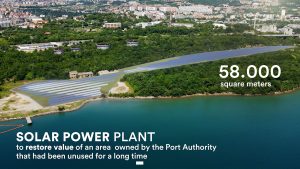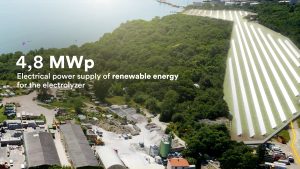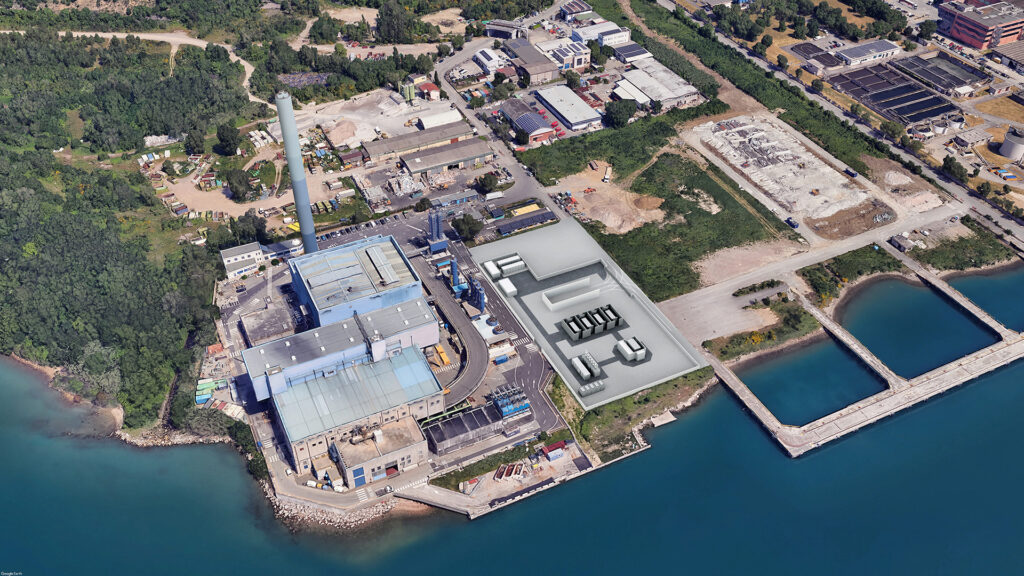Europe’s first cross-border Hydrogen Valley is transforming regional decarbonization through large-scale collaboration, industrial testbeds and a long-term ecosystem approach.
Hydrogen has become a decisive element in Europe’s clean energy transition. One of the most ambitious examples is in the North Adriatic Hydrogen Valley (NAHV), developed in cooperation between Croatia, the Italian autonomous region of Friuli Venezia Giulia, and Slovenia. The initiative brings together 37 partners and is structured around 17 industrial testbed projects operating in several hard-to-abate sectors, including energy and mobility sectors such as land and maritime transportation, manufacturing, waste management, glass production, and steel manufacturing. NAHV participants have been collaborating with research, academia, regulators, policy makers, and the public to develop coordinated pathways for the production and use of renewable hydrogen.
Jerneja Sedlar, NAHV Project Coordinator from HSE, Slovenia’s leading energy provider, clearly explains this vision: “The North Adriatic Hydrogen Valley (NAHV) is a hydrogen economy with a vision of accelerating the transition to a sustainable hydrogen economy. It represents a unique cross-border partnership that brings together industry, research institutions, local authorities and governments under a common vision. Our work focuses on creating a fully integrated hydrogen ecosystem, from production and storage to transportation and industrial use.”
NAHV is structured to ensure that hydrogen production is directly linked to industrial and municipal applications. Its plans include producing 5,000 tonnes of renewable hydrogen per year by 2030, with a focus on areas where decarbonization alternatives are limited. Collaboration between governments, utilities, universities, small and medium-sized enterprises, and large industries provides long-term investment stability.
Northern Adriatic Hydrogen Ecosystem
The Valley has been responsible for the development of the broader hydrogen ecosystem in the North Adriatic Sea, a regional platform that brings together institutions, investors and technology developers. Its central venue will be the Hydrogen Ecosystem North Adriatic Conference, where stakeholders will discuss regulation, financing priorities and technology deployment. Complementary projects such as the North Adriatic Clean Hydrogen Investment Platform (NACHIP), H2Ready and the North Adriatic Smart Community Hydrogen Accelerator (NASCHA) build on this framework by supporting the investment readiness of the hydrogen-based solutions involved and accelerating their adoption in the market.
This approach enables progress beyond demonstration and toward consistent deployment of planned solutions. Technology developers work with local governments and investors to ensure infrastructure, workforce skills and supply readiness grow together.
“Hydrogen valleys like NAHV are extremely important for the development of the hydrogen economy, as they demonstrate how clean hydrogen can actually be introduced across sectors and regions,” emphasizes Gerneja Sedler. “They serve as living laboratories where innovative technologies meet real-world use cases, charting the path from pilot projects to large-scale implementation.”

NAHV focuses on practical change rather than symbolic developments. Across the portfolio across the North Adriatic hydrogen ecosystem, testbeds and pilot projects in cement production, steel casting, port logistics and municipal transport are underway, creating reference cases that can be replicated and scaled across borders.
“Through this project, we are not only investing in clean technology, but also in the future of the region, ensuring energy security, competitiveness and new opportunities for local communities. As coordinator of NAHV, I am proud to see how the cooperation between Slovenia, Croatia and Italy is shaping one of the most ambitious hydrogen initiatives in Europe,” concluded Gerneja Sedler.
AcegasApsAmga Trieste’s hydrogen hub turns vision into infrastructure
An important example of this approach is the AcegasApsAmga initiative. The company’s hydrogen hub Trieste is becoming one of NAHV’s flagship infrastructure assets. The facility is designed as both a renewable hydrogen production hub and distribution platform serving mobility operators and industrial users across the municipality. Officially inaugurated on September 18, 2025, the hub marked the prima pietra, or first stone, of the city and region’s long-term hydrogen infrastructure plan. The project combines €15.8 million from Italy’s National Recovery and Resilience Plan and €1.5 million from Horizon Europe, bringing the total investment to over €20 million, with a 5MW electrolyser powered by a 4.8MW solar park on a reclaimed industrial site producing around 370 tonnes of renewable hydrogen per year. The facility is located next to a waste-to-energy plant and allows wastewater from the heat recovery process to be reused for hydrogen production, creating a circular energy loop between municipalities. Once operational, hydrogen will be supplied to public transport (road and rail) and logistics providers, supporting the regional value chain from renewable energy generation to utilization.

Its NAHV industrial testbed will demonstrate how industrial users and local governments can connect to a shared supply framework. In a broader sense, the North Adriatic Hydrogen Ecosystem is a unique phenomenon that brings together knowledge, innovation and commitment, demonstrating that Europe can provide solutions to meet today’s climate and energy challenges while laying the foundations for long-term prosperity.
As NAHV moves toward full operation, that message remains consistent. Hydrogen is becoming a central pillar of industrial and territorial innovation in the Northern Adriatic.
Please visit our website for more information.

This article will also be published in the quarterly magazine issue 24.
Source link

